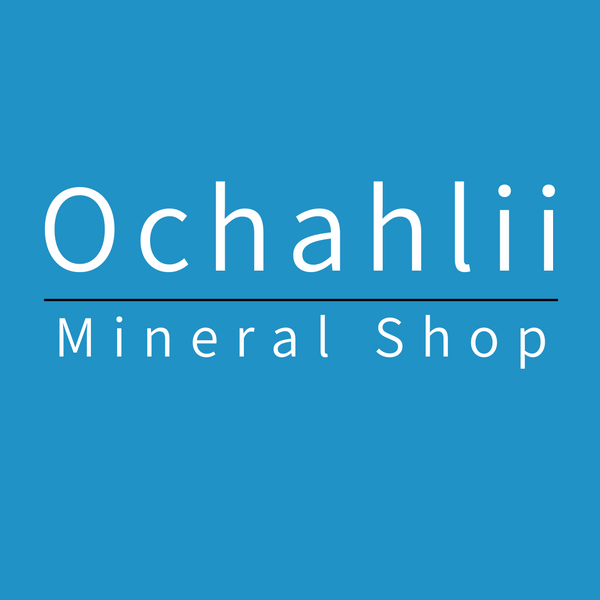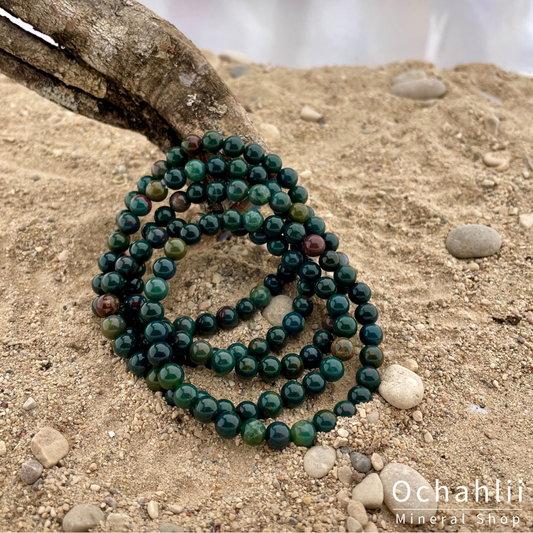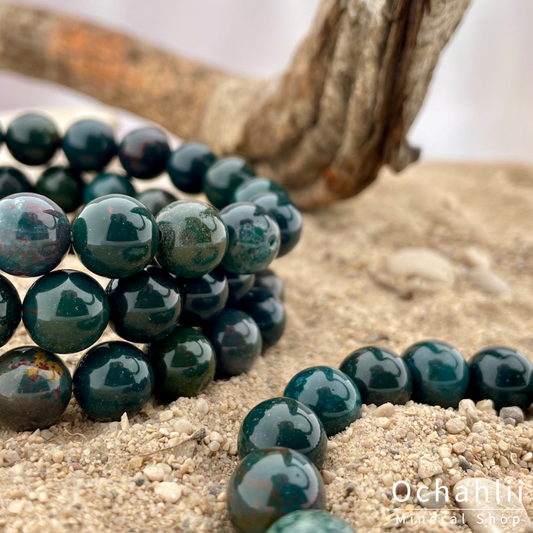
Heliotrope
The name "heliotrope" is derived from two Greek words: "helios", meaning "sun", and "trepein", meaning "to turn". This name reflects the ancient belief that when the stone was placed in water, it could reflect or change the sun. This idea probably comes from the way the red spots on the stone can resemble sunlight reflecting or shining in water.
This ancient Greek name thus indicates the stone's visual association with the sun, a property that was probably prized and mystically interpreted in earlier times. It reflects the fascination of ancient people with the natural world and the ways in which they attributed meaning and symbolism to natural materials and phenomena. It is a form of chalcedony, a type of quartz. Heliotrope is formed in hydrothermal environments and is often found in the crevices of older rocks or as pebbles in riverbeds.
- Chemical formula: SiO2
- mineral group: Quartz
- hardness: 6-7 moh
- Location: India, Australia, Brazil, China and the Czech Republic
Heliotrope has a protective, grounding and balance effect. It has a calming effect on irritation, aggression and impatience, activating and invigorating when one is exhausted and tired. Heliotrope gives courage, helps you set boundaries and keep negative influences out. It makes you flexible and increases your adaptability. Heliotrope stimulates intuition, creativity and dreams.
Chakra: 1st and 4th
-
Heliotrope (Blood Jasper) bracelet 6mm
"Recovery"
Regular price 8,50Regular priceUnit price / per -
Heliotrope pierced pendant
"Recovery"
Regular price 13,95Regular priceUnit price / per -
Heliotrope (Blood Jasper) bracelet 8mm
"Recovery"
Regular price 10,50Regular priceUnit price / per -
Heliotrope (Blood Jasper) bracelet 10mm
"Recovery"
Regular price 13,95Regular priceUnit price / per -
Heliotrope silver ring size 56
"Recovery"
Regular price 82,50Regular priceUnit price / per -
Heliotrope silver ring size 54+
"Recovery"
Regular price 75,00Regular priceUnit price / per -
Heliotrope silver ring size 60
"Recovery"
Regular price 72,50Regular priceUnit price / per -
Heliotrope silver ring size 58
"Recovery"
Regular price 87,50Regular priceUnit price / per -
Heliotrope silver pendant
"Recovery"
Regular price 19,95Regular priceUnit price / per









